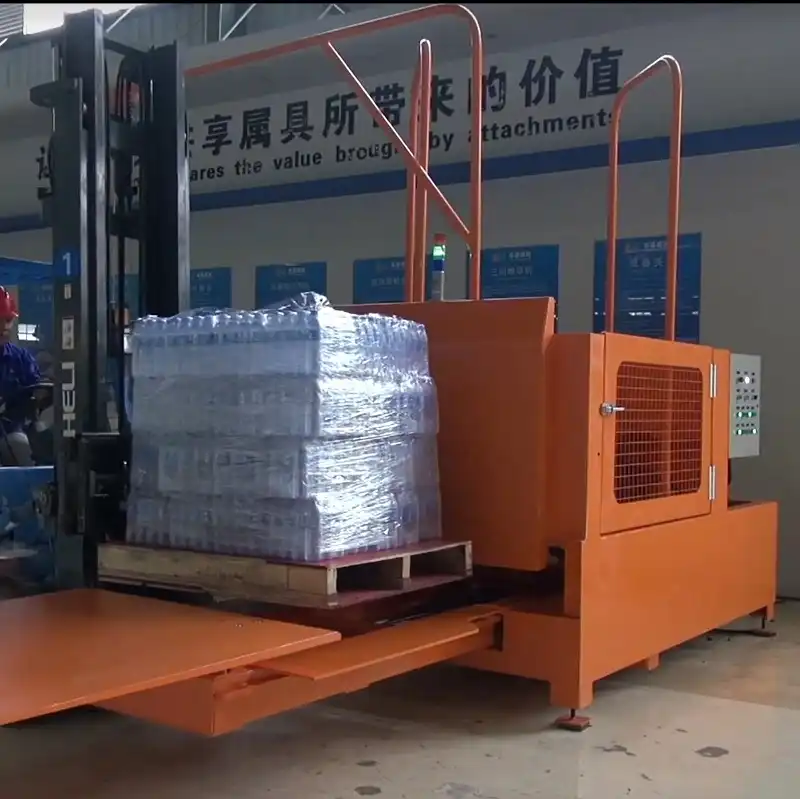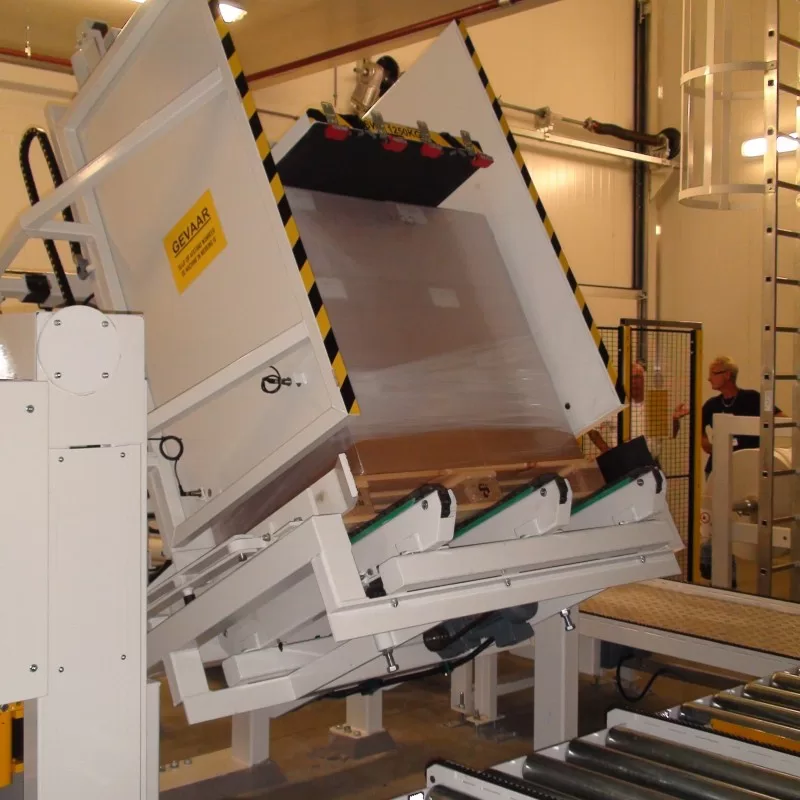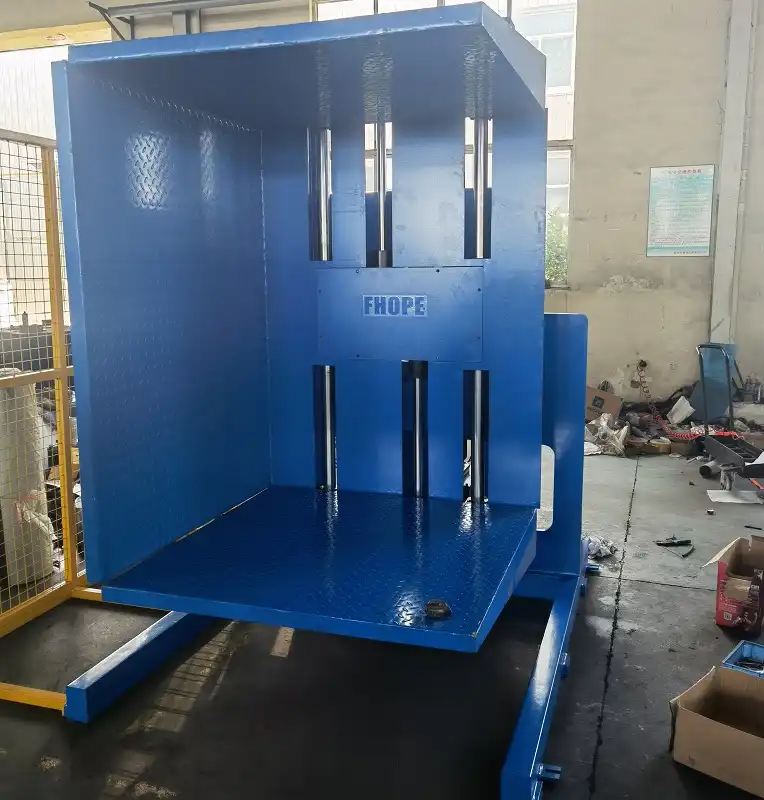Top 5 Negotiation Strategies for Buying a Pallet Inverter

Investing in a pallet inverter is a strategic move to boost operational efficiency, enhance workplace safety, and better manage costs within logistics and manufacturing environments. However, acquiring this essential piece of material handling equipment involves more than just choosing a model. Effective negotiation is crucial to secure the best possible terms and ensure the pallet inverter aligns perfectly with your operational needs and budget. This guide outlines five key negotiation strategies to help you maximize the value derived from your pallet inverter purchase.
1. Define and Prioritize Your Requirements Thoroughly
Before engaging with suppliers, gain a comprehensive understanding of your precise operational requirements. Pallet inverters vary significantly in type, capacity, functionality, and features. Consider these critical parameters:
- Load Characteristics: What are the typical dimensions (L x W x H) and weight of your pallets? Are there unusual load types or stability concerns?
- Required Throughput: How many pallets per hour or shift need to be processed? This impacts required cycle time.
- Operational Environment: Will the inverter operate in specific conditions like cold storage, cleanrooms, or hazardous areas?
- Space Constraints: What is the available footprint for the machine? Are there height limitations?
- Automation Level: Do you need manual, semi-automatic, or fully automatic operation? Does it need to integrate with existing conveyors, AGVs, or WMS?
- Specific Features: Are features like adjustable clamping pressure, specific loading methods (e.g., forklift, pallet jack), or 180-degree inversion essential?
- Safety Needs: What specific safety features are mandatory (e.g., light curtains, safety fencing, emergency stops)?
Prioritize this list into "must-haves" and "nice-to-haves." Entering negotiations with this clarity prevents distractions from non-essential features and empowers you to focus discussions on aspects delivering tangible value. A well-informed buyer commands respect and can steer negotiations effectively based on precise pallet specifications and operational goals.
2. Conduct In-Depth Market Research and Price Benchmarking
Strong negotiation leverage comes from a solid understanding of the pallet inverter market. Research is essential to grasp typical price ranges, feature sets, and technological advancements across various manufacturers and distributors.
- Compare Models: Obtain quotes and specification sheets for comparable models from multiple suppliers.
- Analyze Offerings: Understand the differences in build quality, included features, warranty terms, and available options.
- Identify Price Drivers: Recognize which features significantly impact the pallet inverter cost.
- Check Supplier Reputation: Look into supplier reviews, testimonials, and case studies to gauge reliability and service quality.
Armed with market data, you can identify fair price points and spot discrepancies between offers. If a competitor provides a similar machine at a lower cost or with better terms, use this information constructively during your negotiation. Also, inquire about potential discounts, promotional offers, or financing options, as timing your purchase strategically can yield additional savings.

3. Explore Bundling Opportunities for Enhanced Value
If your company plans to acquire other equipment alongside the pallet inverter, or anticipates future purchases, bundling can be a powerful negotiation tactic. Suppliers are often more flexible on pricing and terms when dealing with larger or repeat orders.
- Combine Equipment: Consider purchasing related machinery, such as pallet wrappers, conveyors, or pallet dispensers, from the same supplier. Negotiate a package deal for a potentially significant discount.
- Include Services: Bundle the pallet inverter purchase with extended warranties, preventative maintenance contracts, spare parts packages, or comprehensive training programs.
- Long-Term Agreements: Discuss potential discounts on future purchases or services if you anticipate ongoing needs, fostering a mutually beneficial supplier relationship.
Bundling shifts the focus from a single transaction to a broader partnership, often unlocking better overall value than negotiating for each item separately.
4. Negotiate Terms Beyond the Initial Purchase Price
While the sticker price is a primary focus, negotiation shouldn't stop there. Several other factors contribute significantly to the pallet inverter's Total Cost of Ownership (TCO) and overall value proposition. Actively negotiate:
- Warranty:
- Duration: Seek longer warranty periods beyond the standard offering.
- Coverage: Clarify what parts and labor are included, and any exclusions.
- After-Sales Support:
- Technical Assistance: Ensure access to responsive phone or on-site support.
- Training: Negotiate comprehensive operator and maintenance training.
- Documentation: Confirm availability of detailed manuals and schematics.
- Installation and Commissioning:
- Costs: Aim for inclusive or discounted installation and setup services.
- Timeline: Agree on a clear installation schedule.
- Lead Time and Delivery:
- Schedule: Negotiate a delivery timeline that meets your operational needs.
- Logistics Costs: Clarify shipping terms (FOB, CIF) and negotiate favorable rates if possible.
- Payment Terms:
- Structure: Explore options like milestone payments, financing, or leasing if beneficial for your cash flow.
- Performance Guarantees:
- Uptime/Cycle Time: Discuss potential guarantees related to machine performance metrics.
Improving terms in these areas can provide substantial long-term savings and operational benefits, even if the initial purchase price remains firm.
5. Leverage Competitive Bidding Ethically
Inviting multiple qualified suppliers to submit proposals (Request for Proposal - RFP or Request for Quotation - RFQ) based on your detailed requirements is a highly effective strategy for securing competitive terms. When suppliers know they are competing, they are more motivated to offer their best pricing and conditions.
- Formalize the Process: Issue a clear RFP/RFQ detailing your specifications, evaluation criteria, and decision timeline.
- Ensure Fair Comparison: Provide the same information to all potential suppliers to enable an "apples-to-apples" comparison.
- Communicate Transparently: Be open about the competitive nature of the process but always negotiate in good faith. Avoid sharing specific pricing between competitors inappropriately. Focus on using the range of offers to understand market value and justify your requests.
- Maintain Professionalism: Treat all suppliers respectfully. Building ethical, professional relationships can be beneficial for future needs, even if a particular supplier isn't selected this time.
Using competitive bids strategically helps uncover the best market value and potentially reveals suppliers or customization options you hadn't initially considered.

Conclusion
Successfully negotiating the purchase of a pallet inverter goes far beyond simply haggling over price. By systematically defining requirements, conducting thorough market research, exploring bundling opportunities, negotiating terms beyond the price tag, and utilizing competitive bidding ethically, you can secure a deal that delivers maximum long-term value for your operation.
Always remember that the Total Cost of Ownership (TCO), encompassing factors like warranty, support, efficiency, and machine longevity, is often more critical than the initial purchase price. Employing these negotiation strategies will equip you to make a confident, well-informed investment that enhances safety, efficiency, and profitability in your material handling processes for years to come.